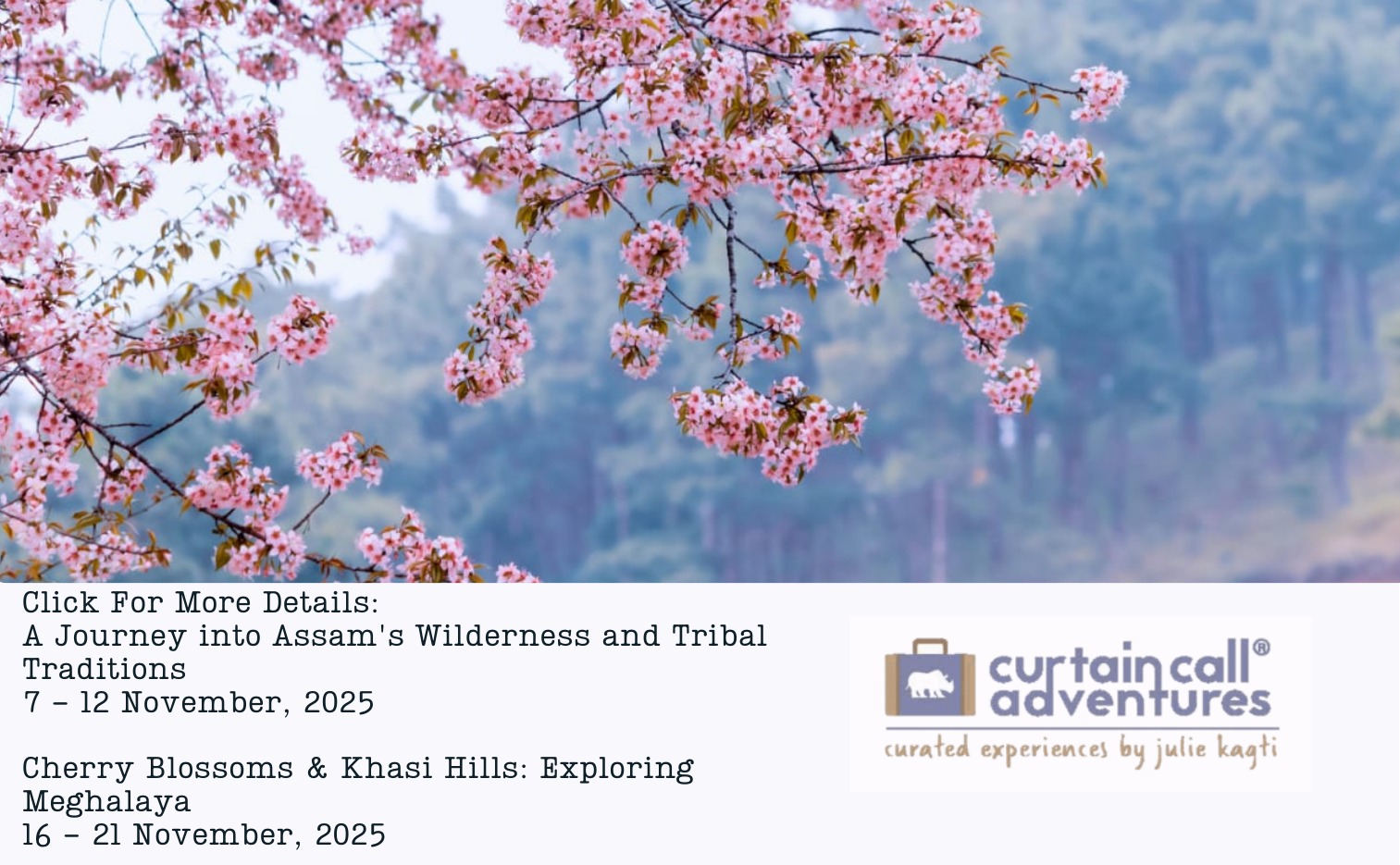Indigenous food and traditions are experiencing a remarkable resurgence, particularly in tourism, as travellers seek immersive experiences. From vibrant food pop-ups to intimate supper clubs, curated culinary adventures that celebrate local food habits are captivating enthusiasts around the globe. Renowned chefs at Michelin-starred restaurants creatively combine obscure dishes and unique cooking methods into their exclusive menus, while passionate home cooks and bloggers diligently revive age-old recipes, documenting their heritage to ensure these traditions endure. This worldwide trend reflects a growing curiosity among people eager to explore the rich amalgamation of culture, lore, and sumptuous feasting. Northeast India’s culinary offerings provide a delightful exploration for those eager to discover its distinct and flavourful heritage.
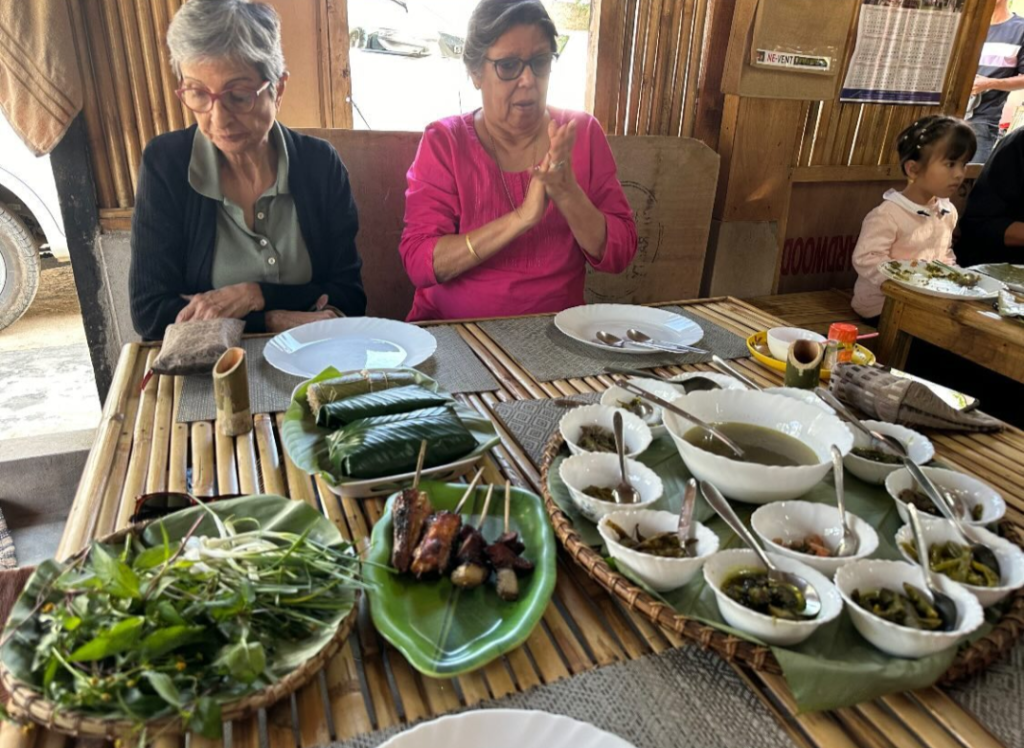
We at Curtain Call Adventures strive to meet the evolving desires of our travellers and food is a large part of it, inviting them to engage in a meaningful exchange of traditions and become storytellers on their journey to the Northeast of India. Flavours come alive through local ingredients like Perilla seeds, Mustard greens, Kaji lemon, Lakadong turmeric, Ing Makhir ginger, bamboo shoots, different types of meats and river fish, all of which are often cooked using traditional techniques like fermenting and smoking.
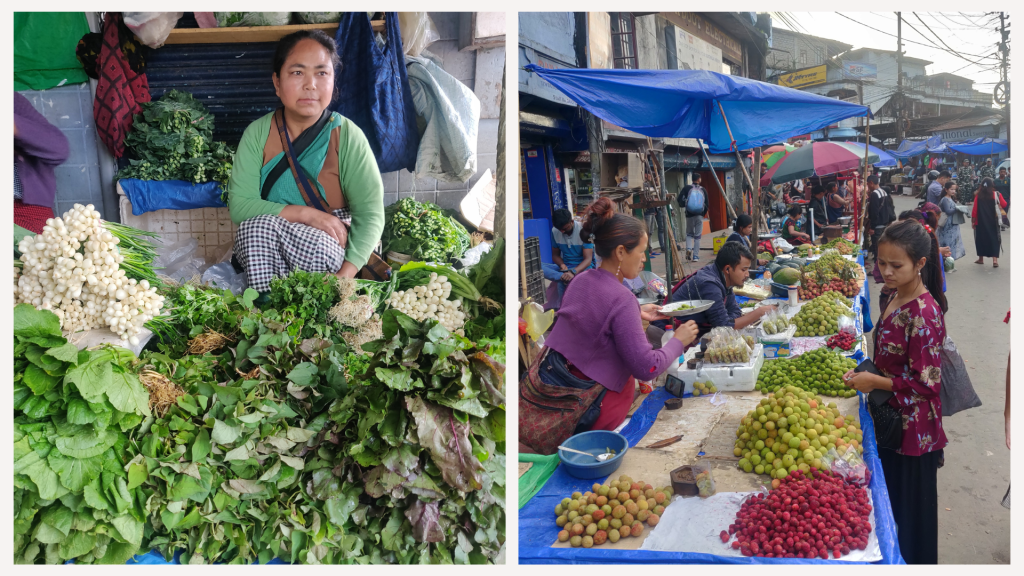
There’s a widespread misconception about Northeast Indian cuisine being solely meat-centric and that it’s somewhat of an acquired taste. While there’s a grain of truth to this, it’s important to recognize that the region boasts an impressive array of vegetables no other place in India consumes such a variety of leafy greens and fresh herbs. as does the Northeast.
Have you ever heard of Pumaloi? a traditional Khasi rice cake with jaggery enjoyed as a snack alongside lal sah (black tea) or Pashor kait, a banana flower salad with white sesame seeds. For many, discovering these dishes can be quite an eye-opener, especially as the cuisines from the region gain popularity.
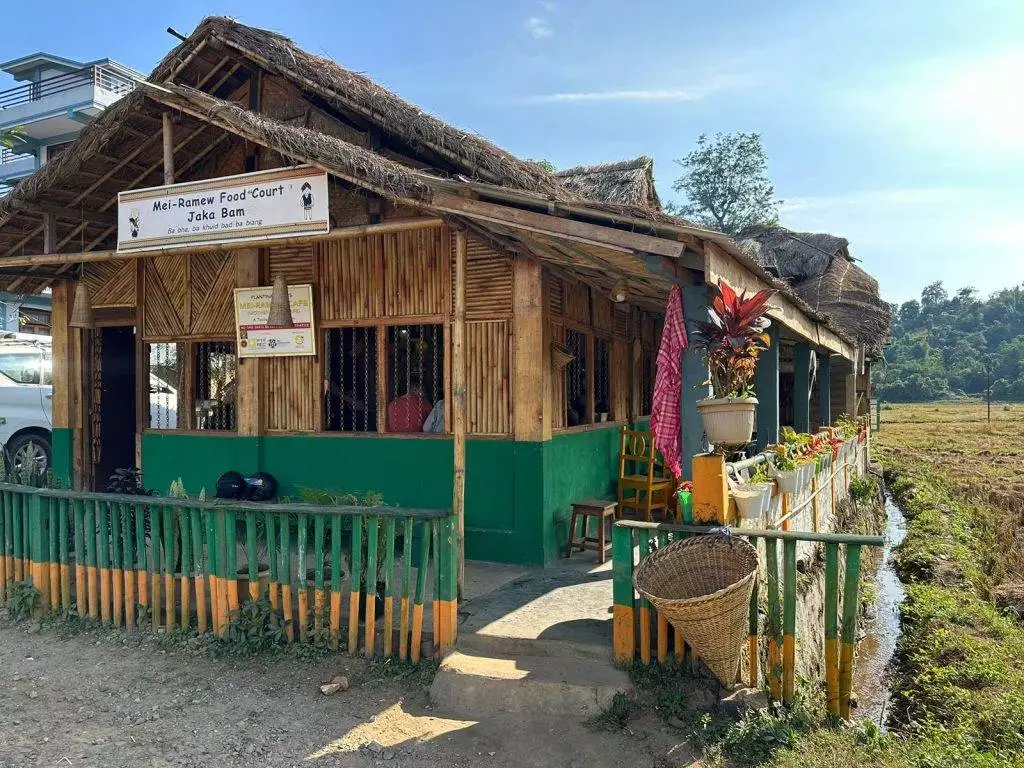
And speaking of the region, Meghalaya’s breathtaking natural beauty is simply mesmerizing. Each corner feels like it has been lifted straight from a postcard. The simplicity of life in the hills is captivating—there’s a carefree attitude among the locals regarding material possessions that translates into their lifestyle, their food, and their everyday tasks. Nothing feels forced or artificial here; they make the most of the resources they have at hand seamlessly.
Khweng, Ri-Bhoi is a district in the state of Meghalaya that proudly upholds the tradition of matriarchy, making it one of the few regions in India that practices matrilineality. A significant portion of the workforce here consists of women, which is refreshing in a predominantly male-oriented world. These women, acting as culinary guardians, are not only preserving their cultural heritage but are also actively working to organize their communities and sustain their way of life.
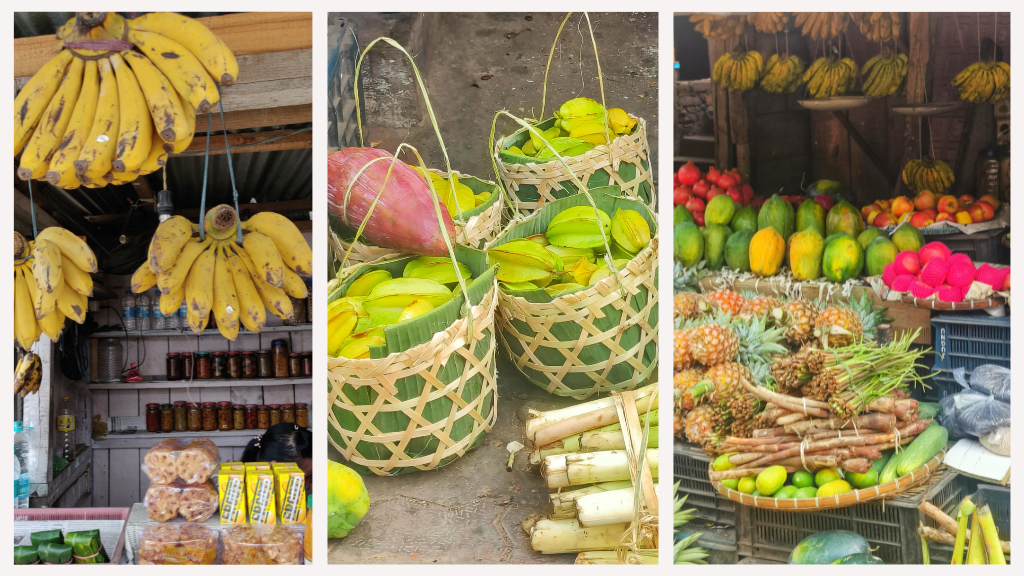
A notable example of this is Kong Dial Muktieh, an enterprising woman from Khweng who is dedicated to promoting traditional cuisine. She aims to innovate traditional recipes using local resources. With a deep understanding of her environment—having grown up in a farming community surrounded by the rich biodiversity of Khweng—Kong Dial opened her food stall in 2013, where she began serving local snacks and traditional dishes.
Kong Dial is a dedicated member of the Nangkyrsoi Self-Help Group, which focuses on enhancing the value of local fruits and vegetables. Her husband, Anaster Diengdoh, plays a vital role in supporting her efforts and helping manage their shop. Through her involvement with NESFAS, Dial found the inspiration and motivation to elevate her food stall into what is now known as the Mei-Ramew Café, or Mother Earth Café.
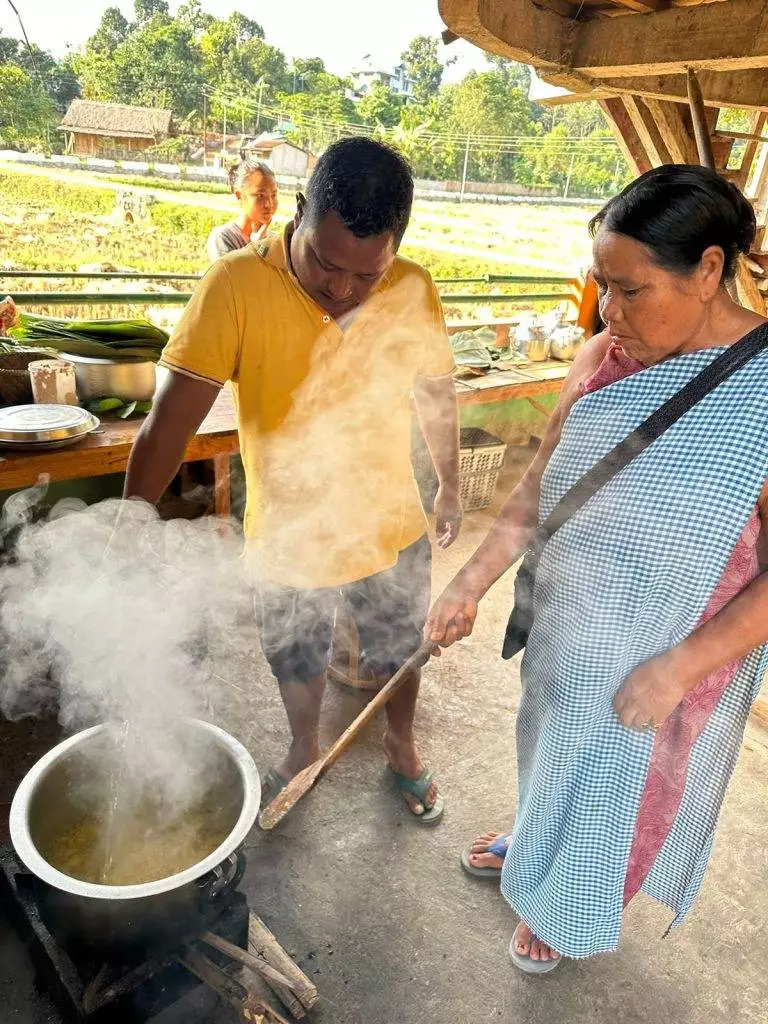
Her culinary talents have garnered appreciation at various events, including the North East Innovators Meet and the #GoVote Campaign organized by the state Election Commission. She prioritizes using fresh ingredients sourced from local farmers as well as her kitchen garden, which is conveniently located next to the café. The Mei-Ramew Café also serves as a marketplace for products from self-help groups, such as candies made from sohkymphor (papaya), sying (ginger), and sohmylleng (amla), as well as pickles made from local fruits and surplus produce from nearby farms.
What sets the Mei-Ramew Café apart is its dynamic menu, which changes with the seasonal availability of food crops. Some of the delightful offerings is the use of Rosella, a common shrub in India, an assortment of tubers and yams paired with Roselle jam.
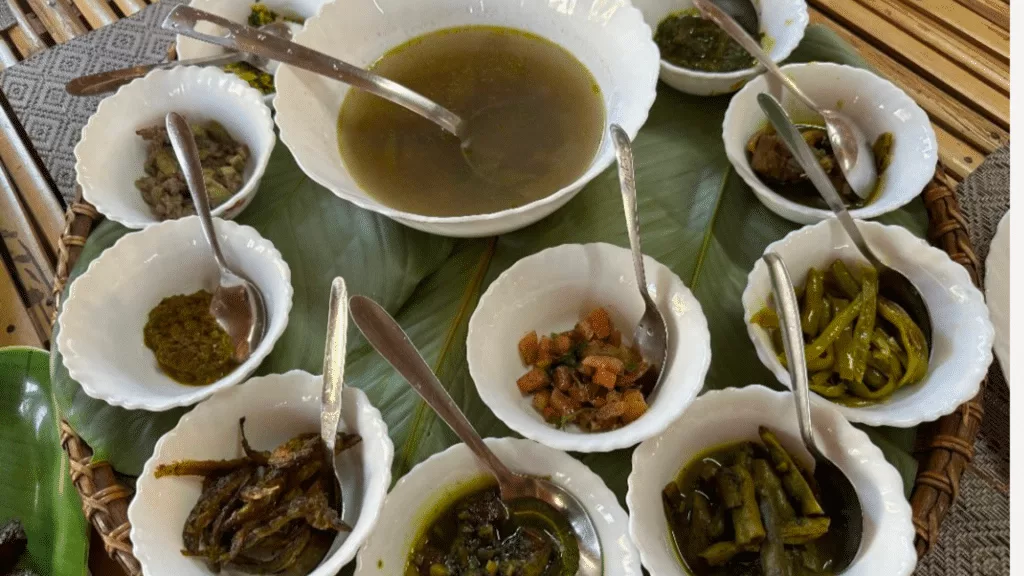
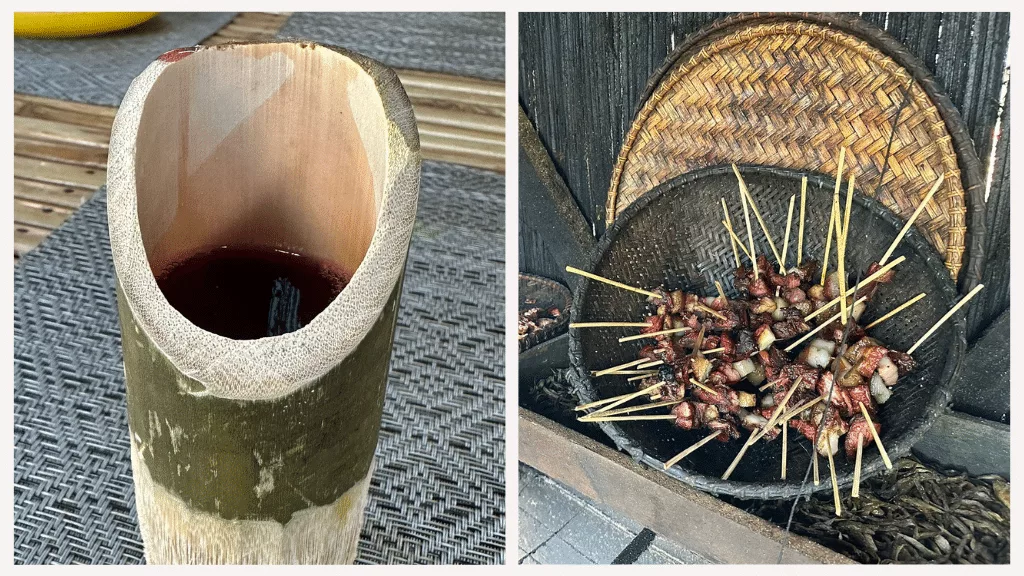
On a pleasant afternoon, our founder, Julie Kagti along with some of our guests, had lunch at Mei Ramew. The restaurant’s menu offered a tasty selection of dishes that highlighted different flavours and ingredients for a memorable dining experience.
The meal included:
– Cooked rice inside bamboo
– Mushroom rice or plain rice
– Local-style chicken curry
– Smoked pork
– Smoked fish
– Bamboo shoots mixed with pork and black sesame seeds
– A mixed curry with blackheaded fish species
– Yam leaf
– Dried fish mashed with Rosella plant
– Yam fruit curry
– Turmeric
– Mashed potatoes
– Mixed papaya salad
– Fried fish
– Chutney
Each dish reflected the rich culinary traditions, making the meal unforgettable.
In the Ri Bhoi district, Khweng boasts the highest agrobiodiversity with 319 cultivated and wild plant species, including traditional crops like khliang syiar (Centella asiatica), roselle (Hibiscus sabdariffa), and jatira (Oenanthe javanica), which grow abundantly in the rice fields and home gardens. Dial also ensures that her menu features micro-nutrient-rich wild plants such as nettle, sow thistle, and fish mint, known for their medicinal qualities.
The Mei-Ramew Cafe is more than just a place to serve food; it embodies a deep connection to nature and the community, proudly reflecting indigenous culture.
Without local farmers who grow the unique crops of Bhoi cuisine, without foragers, and without community members offering feedback to enhance the food quality, the café would not exist. Moreover, the cafe plays a crucial role in the village’s socio-economic fabric. It acts as a hub where community members can come together, fostering informal discussions on a variety of topics. As gastronomy tourism continues to grow, this cafe stands as a vital asset for the village’s economy. For the cafe to thrive, however, ongoing support from the community will be essential.
*’Kong’ is a respectful address for women elders in Khasi.
*Ri Bhoi is an administrative district in the state of Meghalaya in India. The district headquarters are located at Nongpoh.
*The Bhois of Ri Bhoi District are the subgroup of the main Khasi Tribe. The majority of the Bhois speak the Bhoi dialect, although they use the Khasi dialect as a major subject in their schools.
*Khweng is a village in Meghalaya,the name of the village Khweng comes from the local Khasi term ‘Khongweng’ which means curved around.
*Khliang syiar (Centella asiatica) commonly known as Indian Pennywort, Jatira (Oenanthe javanica)commonly known as Chinese Celery or Water Celery.
Khasis, Jaintias, and Garos – Indigenous tribes of Meghalaya.
*Pumaloi- a traditional Khasi rice cake with jaggery enjoyed as a snack.
*Lal sah -black tea.
* Pashor kait – a Khasi preparation, banana flower salad with white sesame seeds.
*”Ing Makhir” (also known as “Sying Makhir”) is a variety of ginger native to Meghalaya, India, prized for its potent medicinal qualities and high gingerol content, used in local remedies and delicacies.
*Lakadong Turmeric is reputed as the world’s best turmeric, organically grown in hilly terrains of Meghalaya, home to the Best Turmeric in India.
*Kazi Nemu, or Kazi lemon, is a GI-certified, indigenous lemon variety from Assam, India, known for its distinctive aroma and taste. It is also cultivated in neighbouring Meghalaya.
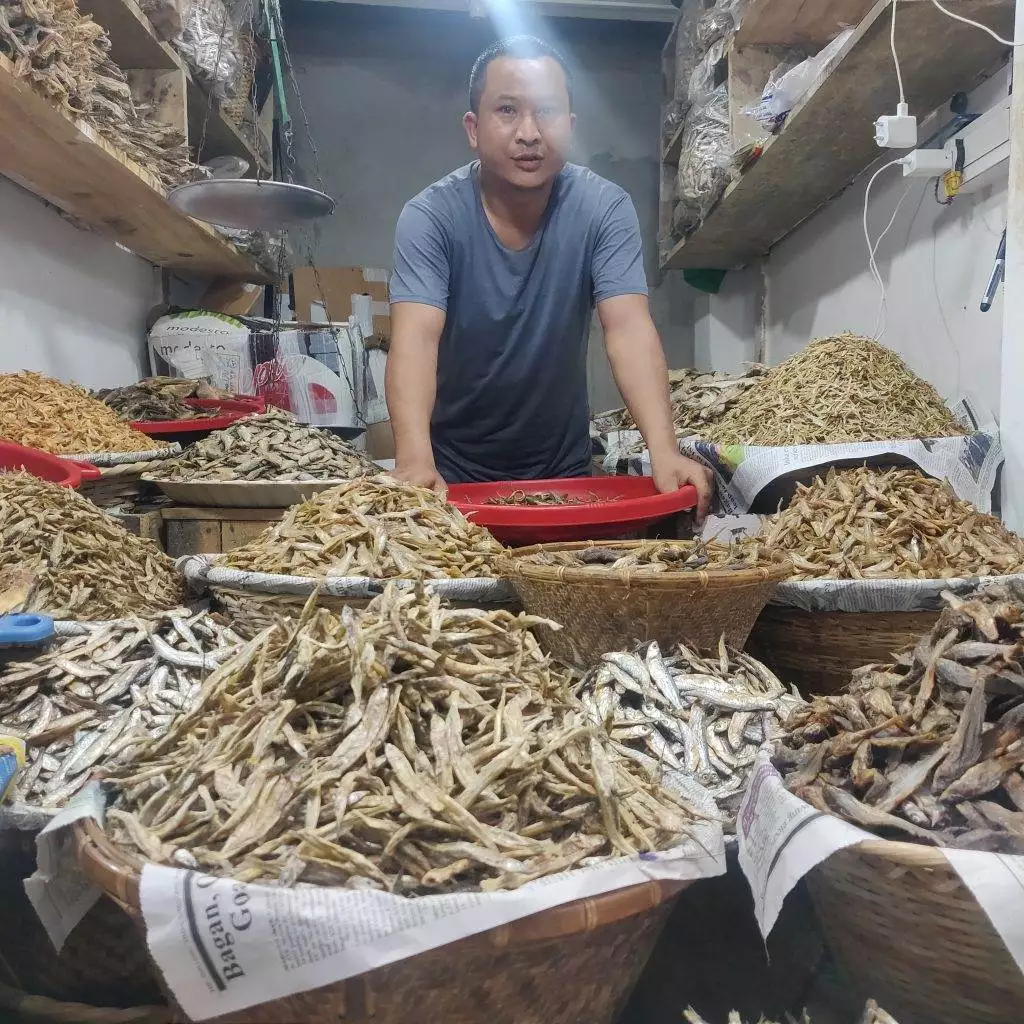
In Meghalaya, food serves as a reflection of local culture. The indigenous tribes—the Khasis, Jaintias, and Garos—each offer unique flavours and cooking styles, creating a distinct culinary variety. Traveling through the three main hills reveals different dishes. The Khasis focus on fresh ingredients and earthy flavours, while the Jaintias blend spices in slow-cooked meats and hearty meals. The Garos highlight simplicity with flavourful rice and meat dishes using local herbs. This culinary journey allows you to experience the essence of Meghalaya, where every meal celebrates heritage, community, and nature.
A person that bears testament to this diversity of food in the region and is trying to revolutionize the way people approach the cuisine of the region is Chef Ahmedaki Laloo, affectionately known as Chef Ahme, a Meghalayan chef known for her fusion cuisine and her work with indigenous ingredients and food traditions, particularly those of the Khasis, Jaintias, and Garos tribes. She is the founder of A’Origins, a dining experience focused on reviving age-old culinary traditions. Her innovative fusion dishes skilfully blend traditional flavours with modern presentation. Chef Ahme has crafted a unique dining experience dedicated to reviving and celebrating age-old culinary practices, inviting guests to savour the authentic tastes of the past while experiencing her contemporary culinary vision.
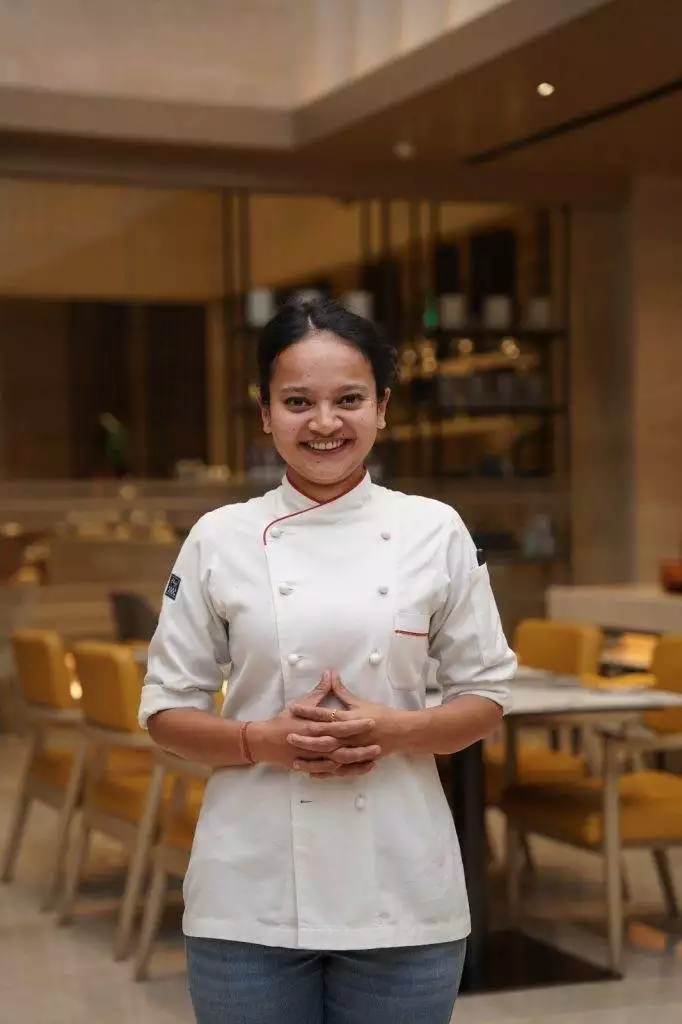
During one of our memorable sojourns in Meghalaya, we were fortunate enough to enjoy a delightful sit down dinner with her. As we savoured each delicious dish, we engaged in a lively conversation about her culinary influences and the inspirations behind her cooking. The warm ambiance, filled with the rich aromas of traditional cuisine, made it a truly unforgettable experience as we exchanged stories and laughter.
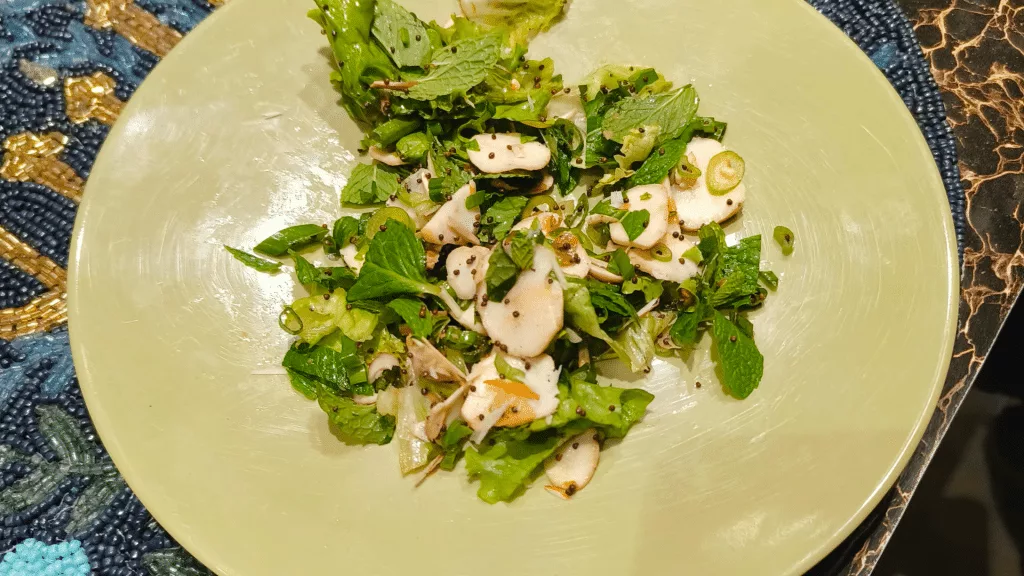
Q. Who inspired you to start cooking and what are some of the most important lessons you’ve learned from your elders or mentors about cooking?
- It was a slow and beautiful awakening to the realization that cooking was my true passion. My journey began with fervent explorations of Shakespeare’s magnificent works, which unexpectedly led me to develop a profound love for food. Inspired, I sought to learn the art of cooking from Bei Bei, my beloved mother. Over time, I have been fortunate enough to replicate cherished recipes passed down from my grandmother, each dish echoing stories of our family history.Through this culinary adventure, I’ve discovered the most significant lesson: to always infuse my cooking with love and passion, for food is not just sustenance—it is a deep and heartfelt emotion. This journey has also imparted the importance of patience, time, and care in every step of the cooking process, reminding me that great meals are a labor of love crafted with intention and joy.
Q.How do you source locally-grown ingredients?
- At our core, we wholeheartedly celebrate the vibrant flavors and traditions of our region by exclusively utilizing native, seasonal ingredients. This unwavering commitment to locality serves as the very foundation of our culinary vision. We source our ingredients directly from local farmers or trusted vendors who specialize in native produce, maintaining a close relationship with them throughout the changing seasons. This approach not only ensures the highest quality and freshest flavors in our dishes but also fosters a deep connection to the land and the community that nurtures it.
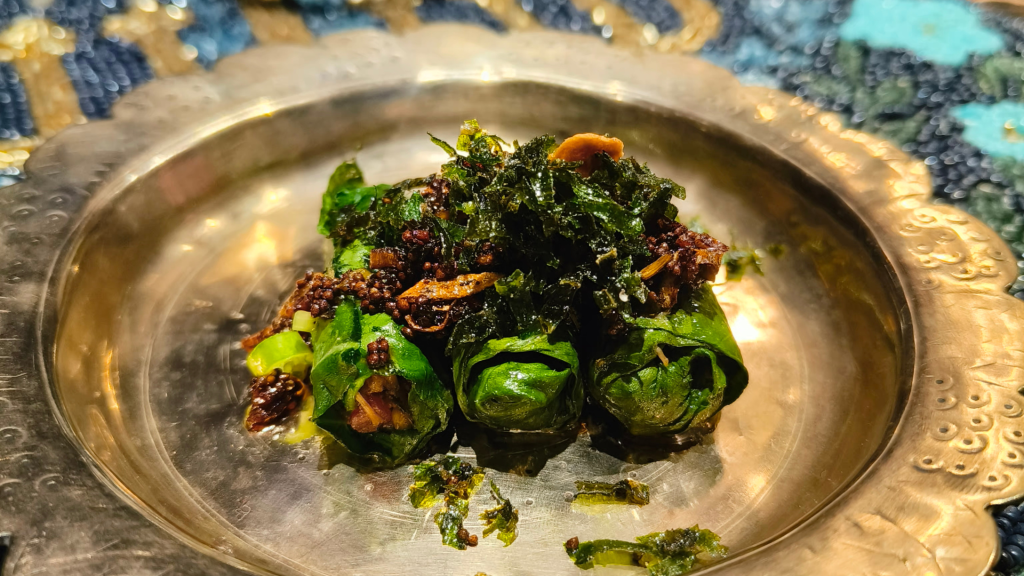
Q. Could you tell me about your culinary education and training?
- Professionally, I completed my degree in Culinary Arts from the Welcomgroup Graduate School of Hotel Administration (WGSHA), Manipal University, Karnataka and have formal industry experience in hotels and stand-alone restaurants respectively in Bangalore, Kolkata, Pune, Goa, Guwahati.
Q. What are some of your signature dishes you created at A’origins?
- A. Signature Dishes from All Three Cuisines:
- Sung Layers: This dish is a heartfelt tribute to the breathtaking foothills of the Jaintia Hills, showcasing the finest rice grains sourced from the lush Sung Valley. Each layer tells a story of the region’s rich heritage and culinary artistry.
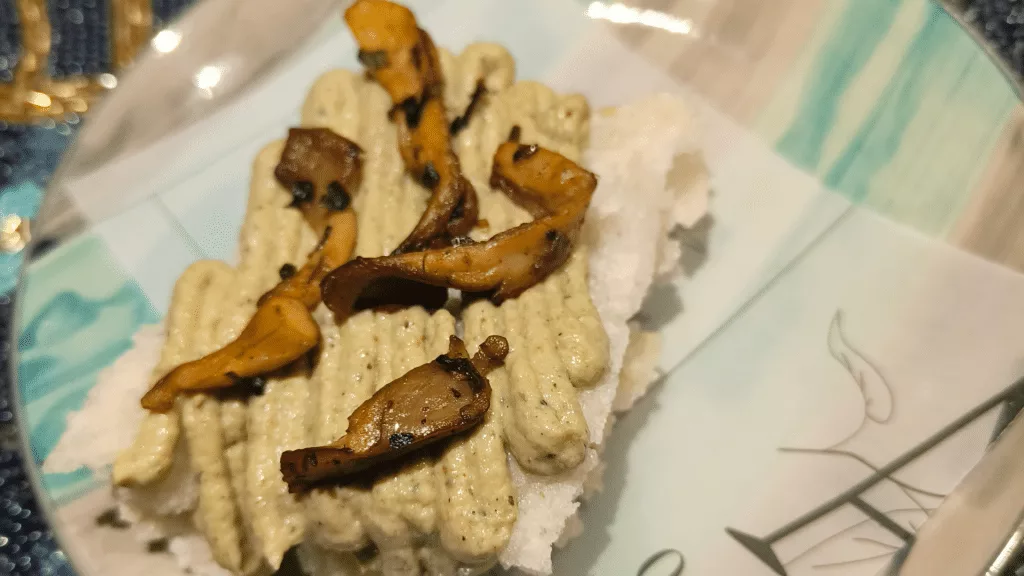
2. Ga’Shews: A vibrant celebration of the unique and flavourful cashews that are indigenous to the Garo Hills region. These delightful nuts bring a distinct crunch and taste that honours the local environment and traditions.
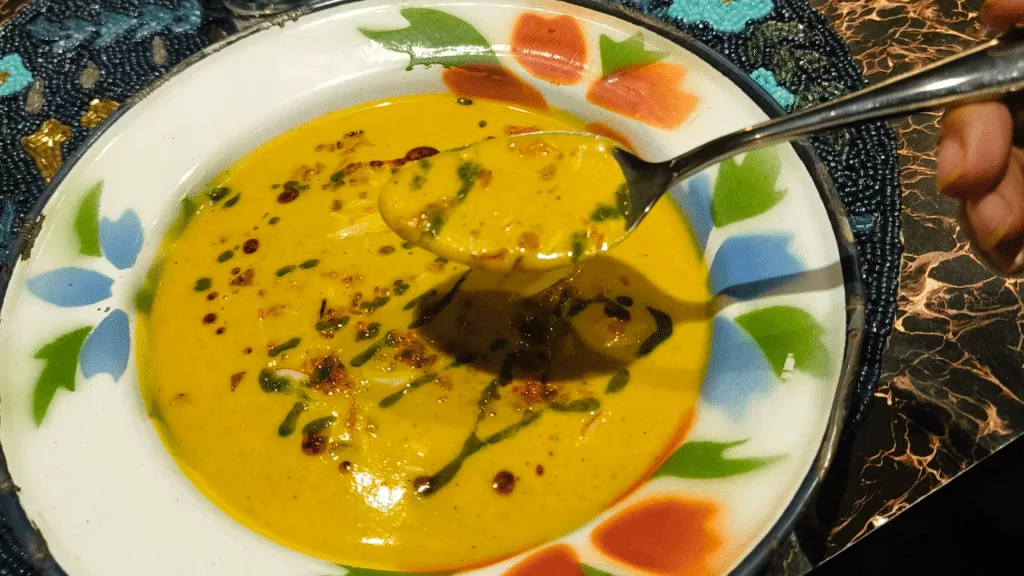
Q. What role do you see indigenous food playing in the future of cuisine?
- A. Indigenous food should be celebrated every day. We must take pride in preserving the authenticity of the heritage that has been passed down to us. I believe it’s our duty to protect indigenous food and, at the same time, showcase it to the world. In today’s world, we’ve been influenced by many global trends, but it’s essential that we pass down our knowledge and traditions to the younger generations.
Q. What are some of the biggest challenges facing indigenous food today for someone working in Shillong, a place that is steeped in regional cuisine, how do you make it appealing to people from other cultures?
- A. One of the biggest challenges facing indigenous food today, especially in a place like Shillong, is preserving traditional recipes while adapting to modern tastes. As regional cuisines are often deeply tied to local ingredients, customs, and methods, it can be difficult to maintain authenticity while introducing these dishes to people from different cultures who may not be familiar with the flavours or cooking techniques. Another challenge is the misconception that indigenous food is “too simple” or “rustic” for modern palates. Many people, especially from outside the region, may not understand the depth of flavours and history behind these dishes.
To make indigenous food appealing to people from other cultures, it’s important to find a balance between preserving the authenticity of the food and presenting it in a way that is accessible and exciting. Storytelling plays a huge role here—sharing the history, cultural significance, and unique ingredients of each dish can help bridge the gap. Also, focusing on the freshness of local ingredients, using modern plating techniques, or incorporating subtle twists while staying true to the original recipe can make the food more appealing to a wider audience.
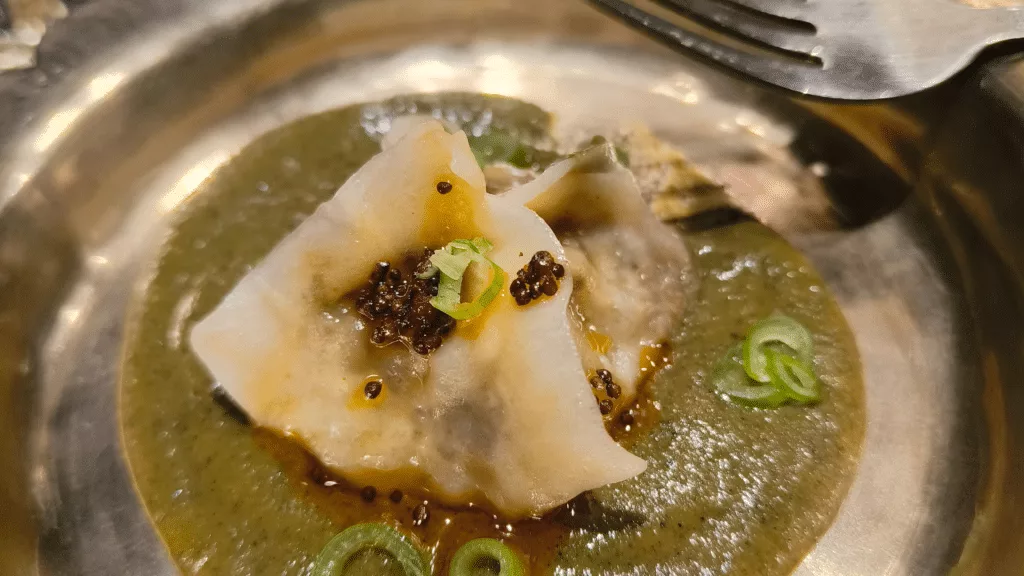
These remarkable women exemplify entrepreneurship, serving not only delicious food but also acting as vital cultural custodians of the culinary traditions they represent. Through their dedication and passion, they bring their rich heritage to life, sharing unique flavors and stories with the world. We at Curtain Call Adventures wholeheartedly applaud their unwavering commitment and the significant impact they have on showcasing their cuisine.

